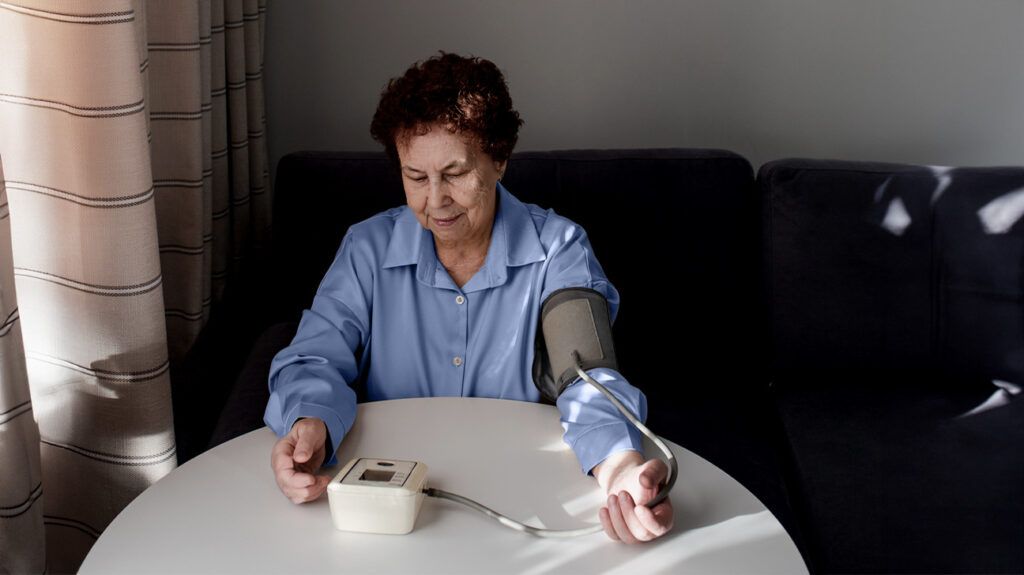Aldosterone is a hormone that helps regulate sodium and potassium levels in the blood. Hyperaldosteronism and hypoaldosteronism are conditions involving abnormal aldosterone levels.
The adrenal glands produce the hormone aldosterone, which plays a vital role in regulating blood pressure and maintaining the balance of electrolytes in the body.
Hyperaldosteronism is when the adrenal glands produce too much aldosterone, which can cause high blood pressure and low potassium levels.
Hypoaldosteronism is when the adrenal glands do not produce enough aldosterone, which can lead to low blood pressure, high potassium levels, and, in some cases, acidosis.
This article discusses hyperaldosteronism vs. hypoaldosteronism and outlines the types, prevalence, symptoms, risk factors, diagnosis, treatment, and outlook for both conditions.

Below, we provide an overview of each condition.
Hyperaldosteronism
Hyperaldosteronism is when the adrenal glands produce too much aldosterone. This causes the body to retain sodium and water and excrete potassium, leading to high blood pressure.
There are two types of hyperaldosteronism:
- Primary hyperaldosteronism (Conn syndrome): This condition
occurs due to an issue within the adrenal glands, such as an adrenal adenoma (a benign tumor) or bilateral adrenal hyperplasia (enlargement of both adrenal glands). - Secondary hyperaldosteronism: This type of hormone increase
occurs in response to problems outside the adrenal glands, such as reduced blood flow to the kidneys, heart failure, or liver cirrhosis.
Hypoaldosteronism
Hypoaldosteronism is when the adrenal glands do not produce enough aldosterone. This causes the body to excrete more sodium and retain potassium, leading to low blood pressure and hyperkalemia (high potassium).
Below, we compare the prevalence of the two conditions.
Hyperaldosteronism
Primary hyperaldosteronism is one of the most common causes of secondary hypertension or high blood pressure with a distinct underlying cause.
Data cited in a 2020 review suggests that in people with high blood pressure, the prevalence of primary hyperaldosteronism ranges from
According to the review authors, evidence shows that the prevalence is higher in people with treatment-resistant hypertension.
Hypoaldosteronism
Limited data is available on the prevalence of hypoaldosteronism.
However, it is
Below, we cover the symptoms of both conditions.
Hyperaldosteronism
Symptoms of hyperaldosteronism may include:
- high blood pressure
- muscle weakness and cramps
- frequent urination and excessive thirst
- headaches
- fatigue
- numbness
Hypoaldosteronism
Symptoms of hypoaldosteronism may include:
- low blood pressure
- fatigue and muscle weakness
- salt cravings
- hyperkalemia (high potassium levels)
- dehydration
- abdominal pain
- irregular heart rhythms
These conditions have different causes and risk factors, which we cover below.
Hyperaldosteronism
The causes of primary hyperaldosteronism include:
- Adrenal adenoma: A benign tumor in one of the adrenal glands. This is the
most common cause of hyperaldosteronism. - Bilateral adrenal hyperplasia: An enlargement and overactivity of both adrenal glands.
The following are
Having high blood pressure and being female may increase a person’s risk of developing the condition.
Hypoaldosteronism
Possible causes of hypoaldosteronism
- Addison’s disease
- infections
- adrenal hemorrhage (bleeding into the adrenal glands)
- congenital adrenal hyperplasia
- kidney problems
- certain medications
- hyporeninemic hypoaldosteronism, a condition
that affects the renin-angiotensin-aldosterone system (RAAS), which plays and important role in electrolyte balance
The following
- having an autoimmune disorder
- living with chronic kidney disease
- living with type 2 diabetes
- taking certain medications, such as nonsteroidal anti-inflammatory drugs
- genetic factors
Doctors diagnose hyperaldosteronism and hypoaldosteronism based on a person’s medical history, physical examination, and blood tests.
Abnormal levels of the following may signal a problem with the adrenal glands:
- aldosterone
- renin
- sodium
- potassium
Hyperaldosteronism
If initial testing suggests hyperaldosteronism, a doctor
- a saline infusion test
- imaging to identify any tumors or growths
- adrenal vein sampling
to determine which adrenal gland is producing excess aldosterone.
Hypoaldosteronism
If a doctor suspects a person has hypoaldosteronism, they
Treatment options for hyperaldosteronism and hypoaldosteronism depend on the underlying cause.
Hyperaldosteronism
For primary hyperaldosteronism, doctors
Doctors
- mineralocorticoid receptor antagonists
- diuretics
- calcium channel blockers and ACE inhibitors
Lifestyle changes like reducing salt intake and monitoring blood pressure and electrolyte levels
For secondary hyperaldosteronism, treatment focuses on treating the underlying cause, such as heart failure, liver cirrhosis, or renal artery stenosis.
Hypoaldosteronism
Treatment for hypoaldosteronism also involves treating underlying conditions such as Addison’s disease, diabetes, or kidney disorders.
Doctors
Additionally, people with hypoaldosteronism may find it helpful to:
- increase their salt intake
- managing their potassium intake
- review their medications with a healthcare professional
Regular follow-ups to monitor electrolyte levels may also be necessary.
People with these conditions typically have a positive outlook.
Hyperaldosteronism
People who receive treatment can typically regain good management of their blood pressure and potassium levels.
However, untreated hyperaldosteronism
Hypoaldosteronism
With proper treatment, most people can manage hypoaldosteronism. Medications like fludrocortisone and dietary adjustments can help people effectively manage symptoms.
However, if left untreated, hypoaldosteronism
Both hyperaldosteronism and hypoaldosteronism can significantly affect electrolyte balance and blood pressure regulation.
Treatment and management depend on the underlying cause and may involve medications and lifestyle changes.
